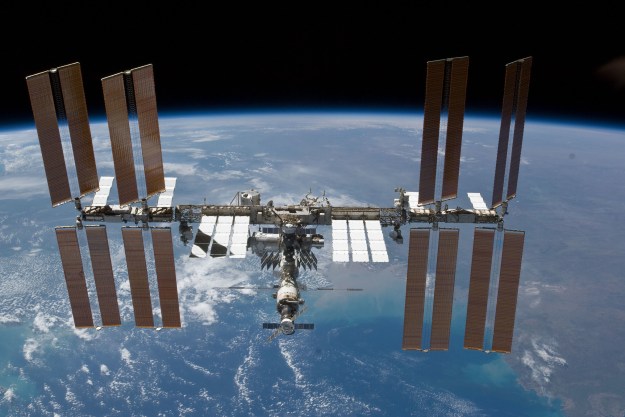The International Space Station (ISS) welcomed its latest crew members on Wednesday, October 14, expanding the number of inhabitants on the orbiting outpost from three to six.
The new arrivals are NASA astronaut Kate Rubins and Russian cosmonauts Sergey Ryzhikov and Sergey Kud-Sverchkov.
The Expedition 64 trio joined existing Expedition 63 members Chris Cassidy of NASA and cosmonauts Anatoly Ivanishin and Ivan Vagner.
The trio arrived at the station aboard a Russian Soyuz spacecraft that had left Kazakhstan three hours earlier. The docking process was streamed live on NASA TV, as was the opening of the hatch that allowed the new arrivals to transfer from the spacecraft to the ISS, which will be their home for the next six months. Both videos are embedded below.
Expedition 64 will officially begin next week, on October 21, when Cassidy, Vagner, and Ivanishin depart the space laboratory for the trip back home.
“The Expedition 64 crew will conduct research in technology development, Earth science, biology, human research and more,” NASA said in a post on its website, adding that “research conducted in microgravity helps NASA prepare for long-duration missions to the moon and Mars, and contributes to improvements for life on Earth.”
NASA noted that this is the second spaceflight for Rubins and Ryzhikov, while Kud-Sverchkov — on his first-ever spaceflight — becomes the 241st person to visit the orbiting laboratory 250 miles up.
Rubins, 41, was born in Farmington, Connecticut, and raised in Napa, California. Her debut spaceflight was on Expedition 48/49 in 2016, during which she became the first person to sequence DNA in space.
The new crew members will have the honor of being aboard the ISS when it celebrates its 20th anniversary of uninterrupted human presence since the Expedition 1 crew arrived on November 2, 2000.
They’ll be joined later in November by four more astronauts arriving aboard SpaceX’s Crew Dragon spacecraft in what will be the capsule’s first operational crewed flight since the Demo-2 mission over the summer. In that mission, NASA astronauts Doug Hurley and Bob Behnken successfully tested the Crew Dragon’s systems, traveling to and from the ISS. with a nine-week stint on the station in-between.
The historic mission, shown here in a picture gallery, marked the first astronaut launch and return within U.S. territory since the end of the Space Shuttle program in 2011. SpaceX’s transportation system is set to bring an end to U.S. reliance on Russian Soyuz launches.
Editors' Recommendations
- How to watch Crew-8 arrive at the space station tonight
- Watch this astronaut’s ‘space waltz’ on the ISS
- Russian cosmonaut breaks record for time spent in space
- Watch this footage of a shooting star captured from the space station
- Here’s how the space station made history 25 years ago today


